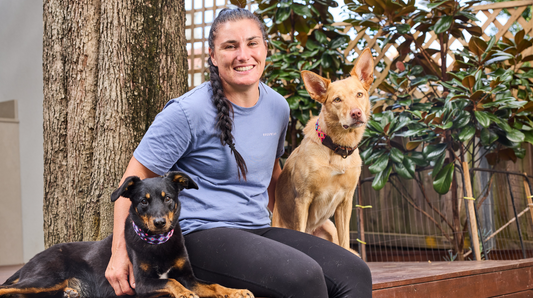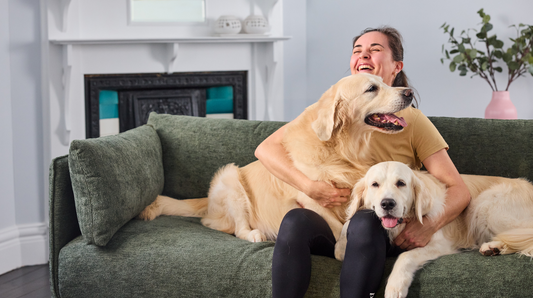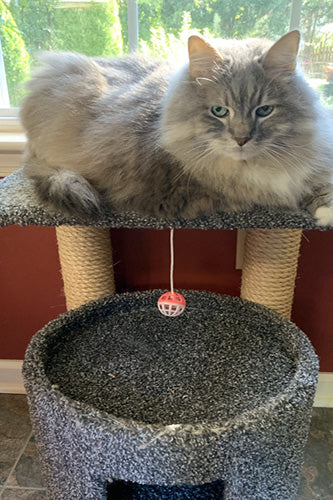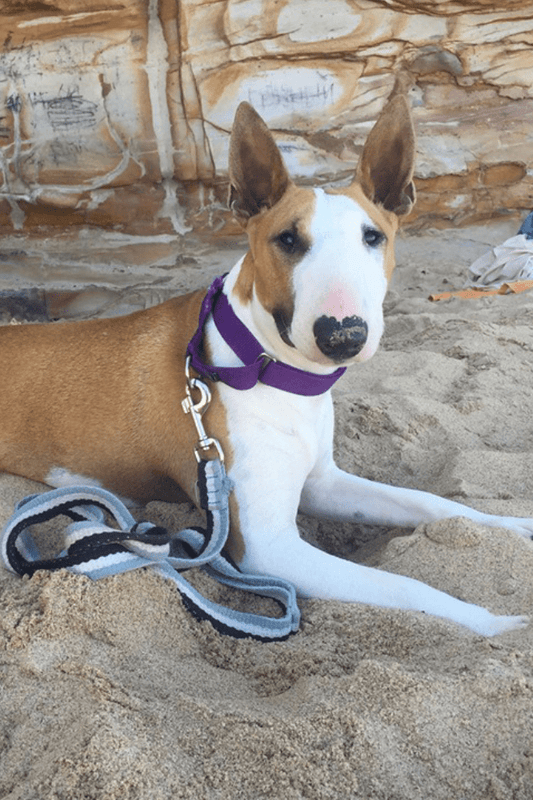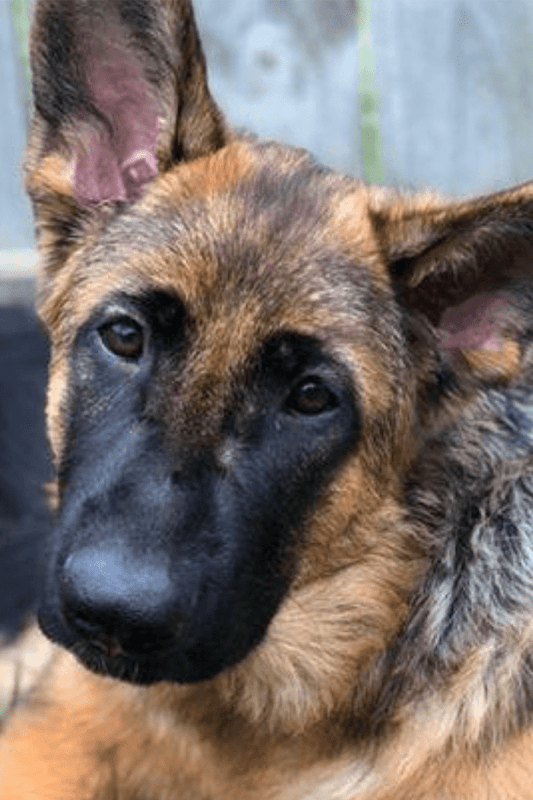Dancing, Border Collies and a whole lot of WOW
Tell us about yourself, who is the lady behind the collies, how long have you been involved in dog training?
I started training my Labrador Border Collie mix, Poppet, over 30 years ago. She was a very complex little dog with a load going on in her head. Poppet inspired me to learn more about dog behaviour problems and ultimately, I do what I do because of her.
I work as a mixed practice veterinarian, with a lot of my time devoted to behaviour medicine.
Tell us about your gorgeous dogs; Name, age, special quirks etc.?
I’ve got two lovely Border Collies at the moment who live with me.
Solan is 11 years old. As a young dog he was very smoochy and I fondly called him ‘Baby Sol’ because he always seemed to want to be near by. He fancies pink fluffy toys best, although does love a tuggy as well. Solan’s favourite game is two-toy-fetch, which over the years I have learnt to enjoy. Solan is one of those dogs who thrives under pressure; he joins me in teaching classes of kinder and primary kids, he also plays to the admiring crowds at the Dog Lovers Show. But Solan is not all about the fuss, he is also comfortable resting by a park bench while I have a cuppa or accompanying the family on a quiet bushwalk.
Sprocket is 5 years old. When he was born I remember saying calling him the ‘ugly one’ because he had a big white head and little stubby legs. He grew from an ugly newborn into an uncoordinated and dorky puppy. He was in a litter of stunning, bright and energetic puppies, but Sprocket was the one who stayed. He would seperate from the rest of the litter at mealtimes and come into the lounge and sit in front of the TV. He would snuggle with his uncle Solan and he never chewed on my 5 month old’s toys. Sprocket and I took a long time to build a working relationship, but the journey has been fruitful. Sprocket’s had several big achievements, which always take me by surprise. He loves to greet me by singing, and he’s the first one to say good morning.

Why did you choose Border Collies?
My first sibling was a Dalmatian, and later Mum had success with a German Shepherd. But my first dog was Poppet, a Labrador Border Collie Mix. When we farewelled Poppet, my parents gave me the choice of three breeds. I knew that of the three breeds given, the Border Collie was the choice for me. I was fortunate a border collie breeder nearby had a litter just born. I have spent time training and trialling a Papillion, but always come back to the Border Collies. I guess they just ‘fit’ with me, whatever I want to try, they’re up for it – rain, hail or shine.
What dog sports do you participate in?
The list seems long, but there are a lot of overlapping skills which permits us to dabble in many sports.
We compete in dances with dogs, obedience, rally, tricks and conformation. I hope to return to agility and herding. Both dogs are ready to start scent work but have yet to trial due to lockdown. We play treibball through NATE and the World League each season and have just completed our Stunt Dog Grand Champion titles with Do More With Your Dog.

What are your achievements?
The dogs have a string of titles after their name with ANKC as well as DMWYD, the International Parkour Association, NATE and the World Treibball League. Solan has qualified for top dog in Freestyle and Heelwork to Music repeatedly and both dogs have had roles in the media.
One of my greatest achievements was to title my cat during 2020 lockdown. 15 year old Binx proved not only that cats are trainable, but old cats are entirely capable of new things. I taught Binx scent work before the dogs could do it, and he is the only cat in the world titled in Stunt Dog.
What is your favourite dog sport and why?
My favourite dog sport is Heelwork to Music. I love bringing my favourite music together with time spent training the dog. With Heelwork to Music, the challenge is to find smooth and appealing transitions from one heel position to the next. It requires enthusiasm yet control from the dog and when the choreography is right and we move together around the ring, everything flows. There’s freedom to incorporate tricks, speed changes and direction which suit the dog, so even older dogs can succeed.

What does it take to train and trial in multiple dog sports?
Curiosity and observation skills to start. I also believe respect for the origin of the sport and for the officials of the sport is important when starting out.
But one of the most important things you need is faith – a lot of faith. The things I do with the dogs is crazy. I do often consider how wonderful it is that a dog – who experiences and values the world so differently to us – will do these random behaviours simply because I ask them to. Most competitions don’t permit my dogs’ preferred reinforcers anywhere near the competition area, but the dogs will still perform (well, most of the time). They’re truly amazing little critters.

How have your dogs shaped your life and your training?
I learnt from a very young age, training doesn’t always fix a dog’s behaviour. So I searched for a way to learn more about why that is. It led me to veterinary science and then behaviour medicine. My whole career has come about from that one little dog I trained as a 7-year-old.
I’m sure I have more patience in general because of what the dogs have taught me. I’m always trying to communicate more clearly with my animals, aiming to train with minimal pressure and avoid physical force.

What else do you do with your dogs to keep their busy brains satisfied?
These days it’s difficult to get away to train the dogs, so I keep them working in 5-10 minute training sessions whenever I can. Our latest project explores how many different ways the dogs can use the Klimb platform. Over the last two weeks we’ve found over 20 different uses for the one piece of equipment. This type of problem solving is useful for prop interaction during a dances with dogs routine, and can count towards a 20:1 title with Do More With Your Dog.
As a keen FitPAWS user, we spent a bit of time playing on our FitPAWS products too. The dogs love a challenge and I find they can really test their paw placement.
Both dogs also really love to hunt out their odour. My children take the odour and hide it around the back yard for the dogs and I to find. Three to five odour finds around the yard really keeps the dogs happy.
What do you feed the squad?
The dogs work for Hills kibble with some 4-Legs chicken balls. Most of their meal portion is fed during training, walks or from a Kong toy. They both get their Antinol rapid capsule at the end of their day in their bowl with a little dinner.
How long have you been feeding Antinol?
We started about 3 years ago.
Have you noticed any changes since feeding Antinol?
Solan sustained a wrist injury during some agility training a few years ago. It took a year of rehabilitation before he was back to his former self, although he hasn’t returned to agility. From time to time I would notice him lick or favour that leg until we started Antinol. I have found Solan has done fabulous with it, and people don’t realise how serious his injury was because he is so physically capable now. He has not had an anti-inflammatory tablet prescribed in 2 years for sore legs.

DWD Questions:
Can you explain what DWD is all about?
We have two sports under the umbrella of Dances with Dogs, Heelwork to Music and Freestyle. Some teams pick one sport and persue it, while others trial in both.
Dances with Dogs is about showing a flowing relationship between handler, dog and music. One of the tricks to helping the routine flow is that the handler’s movements look less like formal instructions and more like choreographed movements.
In Heelwork to Music, the team uses up to 8 different heel positions with some limited time spent on tricks permitted. It has its routes in traditional obedience, but encourages handler interpretation to highlight the team’s strengths or tell a story appropriate to the music selected.
Freestyle is essentially ‘tricks to music’. The team may choose not spend time any time in a heel position. Freestyle has more room for flashy moves, more prop work and distance moves than HTM. The ability to tell stories is arguably easier in a FS routine, but there’s more room for deductions if your tricks aren’t accurate or distinctly seperate. Freestyle has the potential to be physically demanding, however as the owner is responsible for the choreography, it is possible to put together a routine to suit any dog.

Do you have to be good at dancing (LOL)?
Fortunately you do not. I have never been a dancer and certainly wouldn’t say I can dance at all. I think coordination is important, you can always learn body movements that suit your music type to help create the illusion you’re dancing. When I started, I found a great deal of comfort in presuming no-one was watching me, they were all looking at my dog. And like anything, the more you watch and do something, you can’t help but get a little better.
How do you begin training a dog to ‘dance with you’?
Dance is communication. Dog training is also communication. So, if you have a good working dialogue with your dog, you’re most of the way there.
Communication is more than just giving orders and having the dog comply, it’s about hearing feedback from your partner and working together. My first dance partner Jetson had a lot to say about my choreography. He was 12 when DWD came to Victoria so he had physical limitations that would sometimes change from day to day. If I asked for one behaviour, he may give me another and together we’d work out the sequence of moves that would work for us and for the music.

How does a competition work?
It’s been 2 years now since we’ve seen DWD in Victoria. But usually the schedule is published on the Victorian competitor Facebook page. There’s an A4 entry form to fill in and email to the trial secretary. You need your DogsVic details as well as the title of your music, artist and duration of your routine. If you have applied for HTM, you need to state the proportion of the routine which will be in a heel position.
On the morning of the trial, you check in with officials and then head over to the ring with your CD for music testing. Music testing is the time set aside before the trial for you to hear how the music sounds across the ring and for you to decide the volume for your performance.
Then you wait for your turn. There are three judges and one ring running at a time, so you can sit back and watch each performance. It’s a very encouraging atmosphere and I love watching the variety of performances.

How could someone new to the sport get started?
We’ve got two DWD clubs in Victoria, the Dances with Dogs Club of Victoria and the Melbourne and District Dances With Dogs Club. Alternatively, if you’ve read the rules and think you can hold your dog’s attention and show off some nifty moves to music, you can just enter and come along to try it out. The worst thing that can happen is you play your favourite music as loud as you like while you and your dog spend some quality time together.





